The cat brain size is small but mighty, influencing everything from their hunting prowess to their quirky behaviors. At solcat.net, we delve into the fascinating world of feline neurology to explore the capabilities of your kitty’s mind, offering insights into their intelligence, senses, and unique adaptations. Dive into this guide to uncover brain facts and feline behavior tips.
1. What is the Size of a Cat’s Brain?
A cat’s brain is roughly 2 inches long and weighs about an ounce, which is approximately 1% of their body weight. While small, the structure and surface folding of a cat’s brain are more similar to humans than to dogs, with about 90% similarity.
Brain Size Comparison
While a dog’s brain is larger, roughly the size of a tangerine compared to a cat’s walnut-sized brain, size isn’t everything. The complexity and structure of the brain are more indicative of intelligence. Cats have about 300 million neurons in their cerebral cortex, compared to the 21 to 26 billion in humans. Dogs tend to have more neurons than cats, but cats have a more significant portion of their brain devoted to movement and vision, whereas dogs have more development in the social cognition part of their cerebral cortex. For tailored care and insights, solcat.net provides resources to help you understand your cat’s unique cognitive abilities.
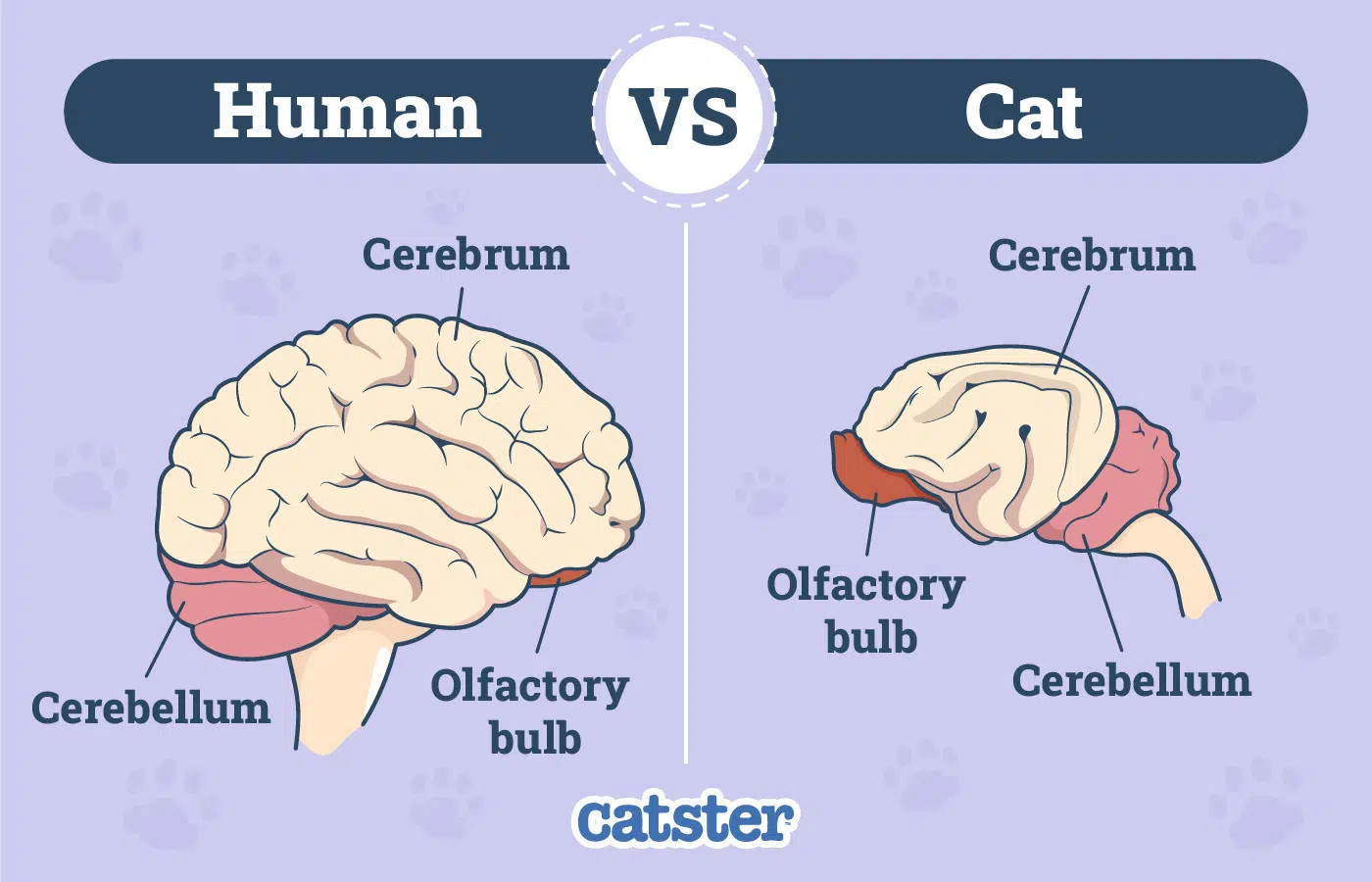 Cat Brain vs Human Brain
Cat Brain vs Human Brain
Brain Structure and Function
The feline brain regulates every aspect of a cat’s life, including their crepuscular behavior—being most active during dawn and dusk. Cats are natural hunters, and their brains drive them to hunt even when they are not hungry, a behavior that differs from dogs. If you’re curious to learn more about how your cat’s brain affects their behavior, visit solcat.net for expert articles.
2. How Do Cats Use Their Brains Every Day?
Cats use their brains to navigate their environment, hunt, communicate, and interact with their surroundings. Their brains are wired for efficiency in sensory processing and motor skills.
Daily Activities and Brain Function
Cats rely on their brains for everything from stalking prey to grooming themselves. Their sharp senses, controlled by the brain, allow them to excel in various tasks:
- Hunting: The brain coordinates movements and sensory input to locate and capture prey.
- Social Interaction: Cats use vocalizations, body language, and scent marking to communicate with other cats and humans.
- Navigation: Their spatial awareness and memory help them navigate familiar environments.
For insights on how to enrich your cat’s environment and stimulate their brain, explore solcat.net.
Crepuscular Behavior
A cat’s brain dictates its crepuscular nature, which means it is most active during dawn and dusk. This is because cats are natural predators of smaller animals that are also crepuscular. Don’t be surprised if your kitty wakes you in the pre-dawn hours; it’s instinct, not torture. According to research, this behavior is deeply ingrained in their neurological programming. To understand and manage your cat’s crepuscular habits, solcat.net offers practical advice and tips.
3. What Role Do the Senses Play in a Cat’s Brain Function?
The five senses play a critical role in how a cat’s brain processes information, influences behavior, and enables interaction with the environment. Each sense contributes uniquely to the cat’s perception of the world.
1. Sight
Cats have exceptional vision, especially in low light. Their eyes contain a structure called the tapetum lucidum, which reflects light back onto the retina, enhancing their ability to see in the dark.
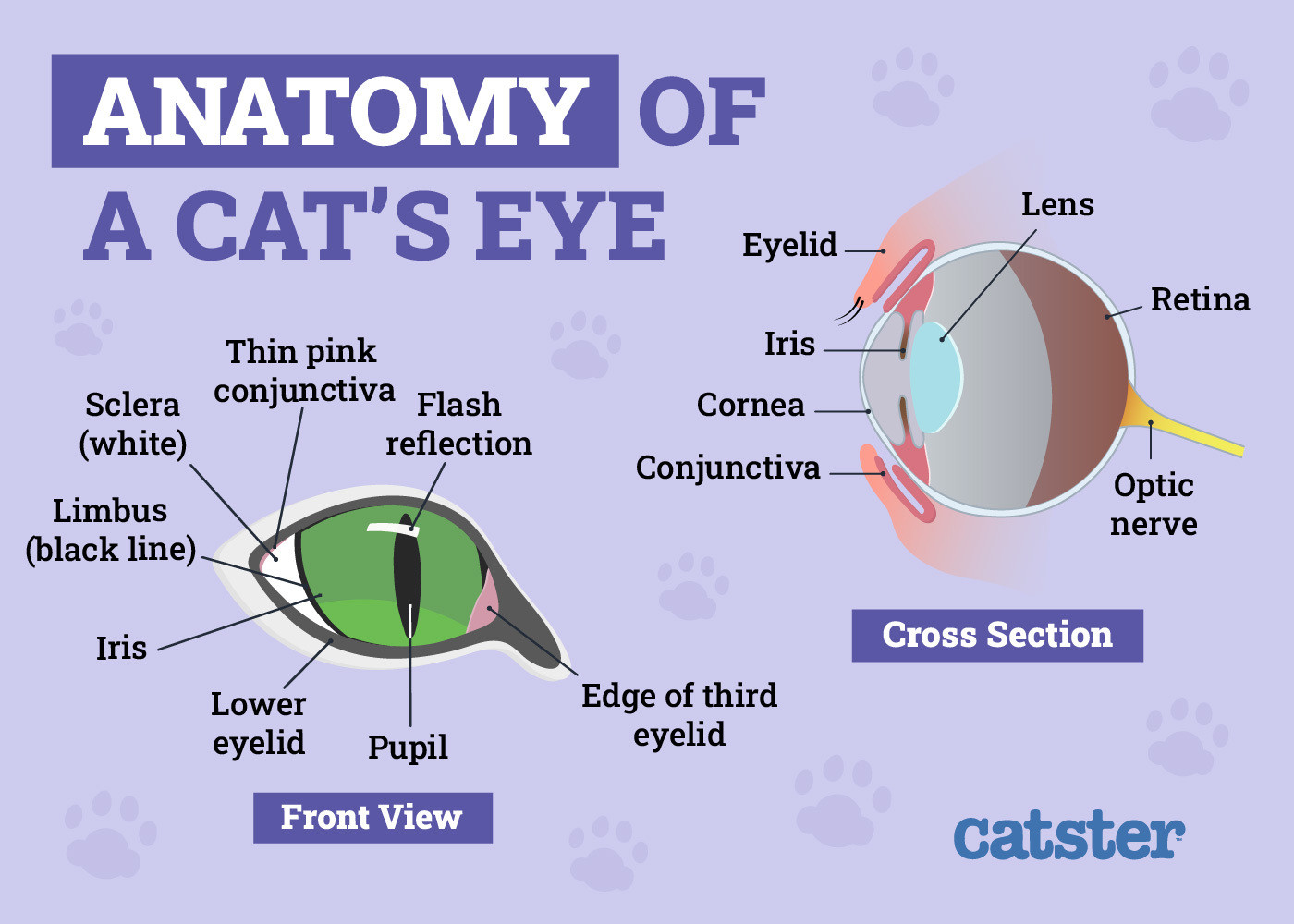 Anatomy of Cats Eye
Anatomy of Cats Eye
Enhanced Night Vision
Cats possess more rods in their eyes than humans, photoreceptor cells that function best in dim light. This adaptation allows cats to see much better in the dark. To ensure your cat’s environment supports their visual needs, solcat.net offers advice on optimal lighting and enrichment.
2. Taste
Cats have fewer taste buds than humans, around a few hundred compared to our 9,000. Interestingly, cats cannot taste sweet flavors. Their attraction to sweets like whipped cream or ice cream is likely due to the fats they contain.
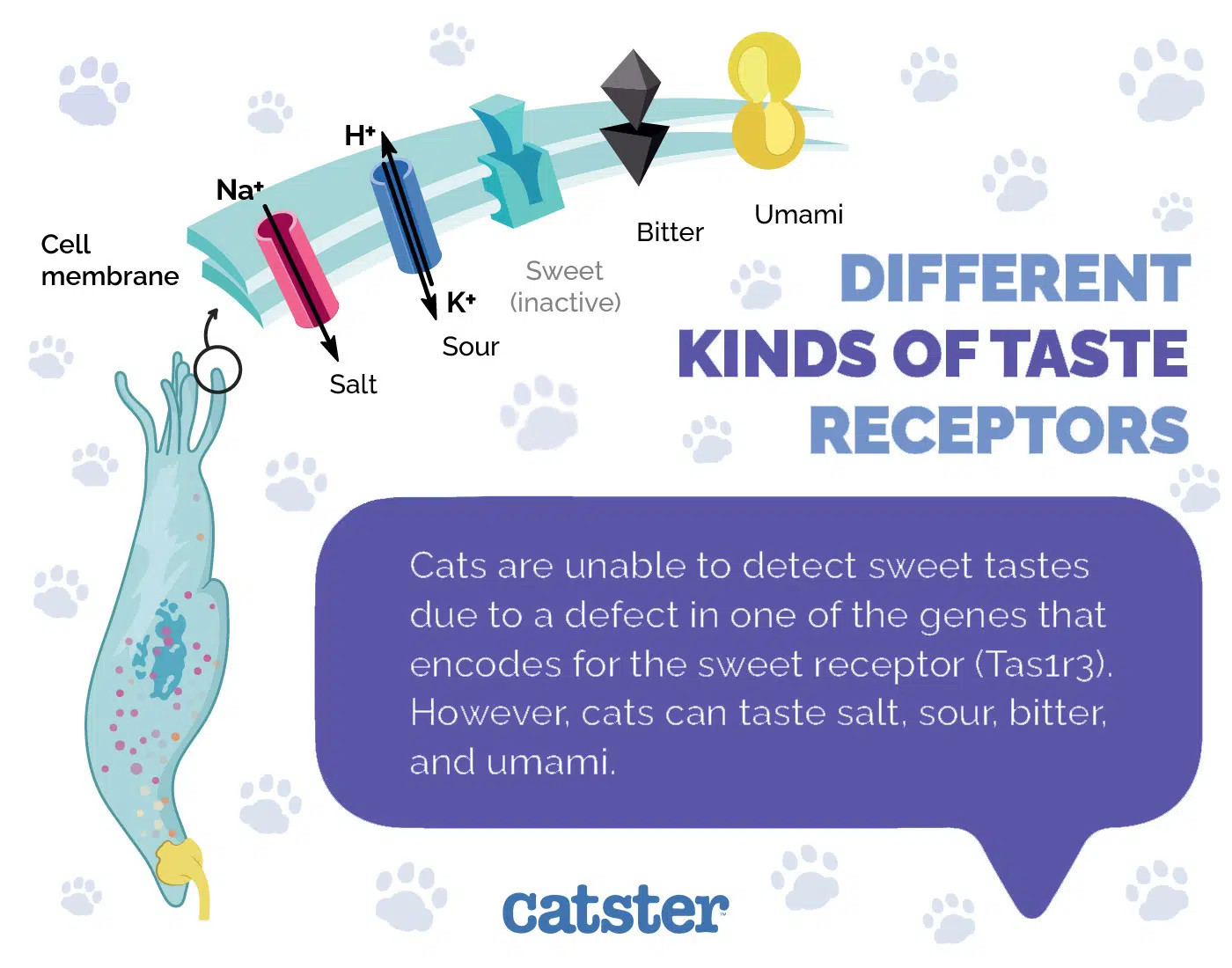 Different Kinds of Taste Receptors
Different Kinds of Taste Receptors
Taste Preferences
Cats can taste bitter, which helps them avoid dangerous or poisonous substances. If you’re using a lemon spray, be cautious, as cats find the taste unpleasant. For insights into your cat’s dietary preferences and how to cater to their unique taste profiles, visit solcat.net.
3. Hearing
A cat’s hearing is incredibly acute. Their cone-shaped pinna helps direct sound into the middle ear, allowing them to pinpoint the source of sounds with remarkable accuracy.
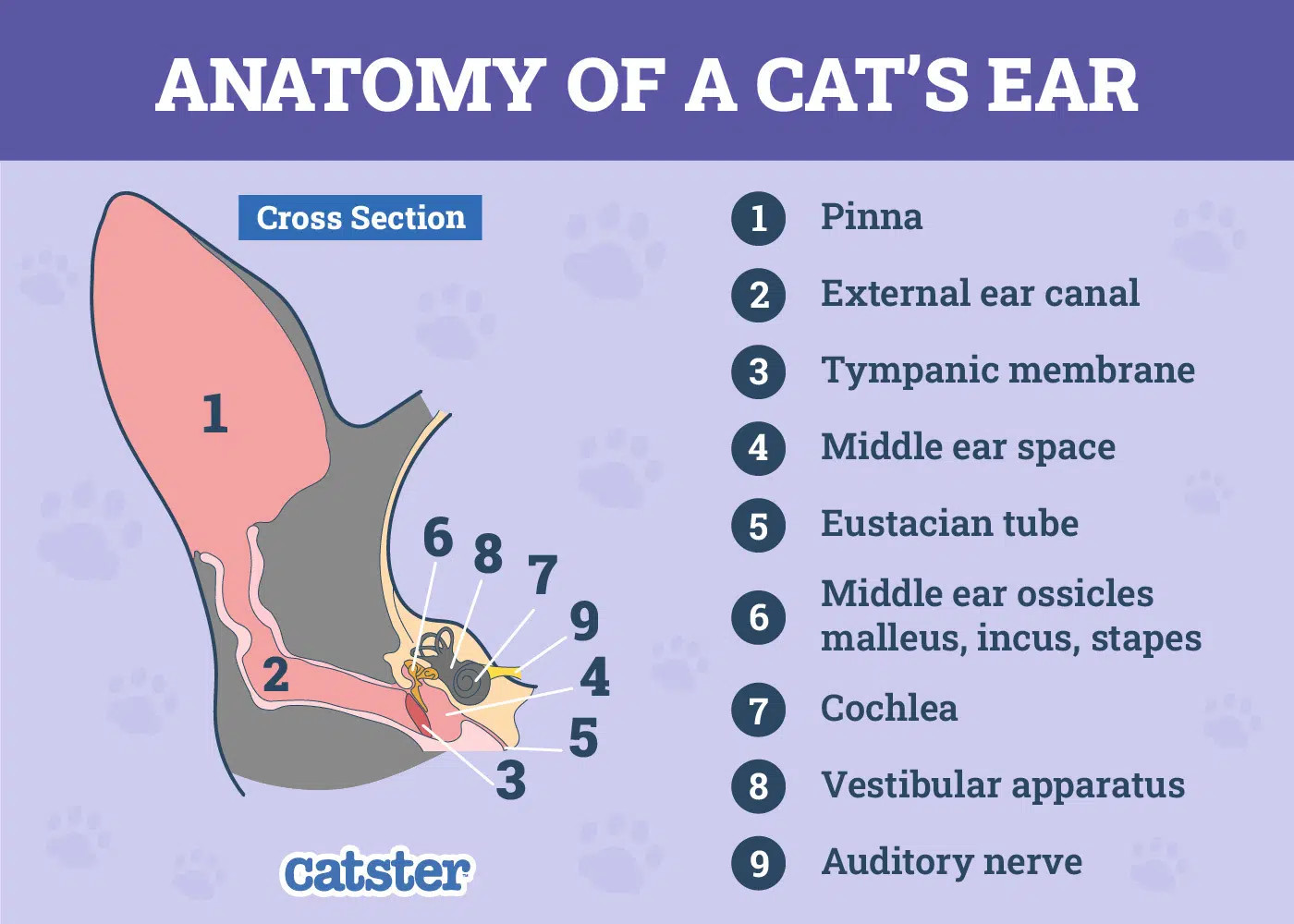 Anatomy of Cats Ear
Anatomy of Cats Ear
Auditory Acuity
This auditory precision is essential for hunting and detecting threats in their environment. Explore solcat.net for tips on creating a cat-friendly home that respects their sensitive hearing.
4. Touch
Cats use touch to navigate and explore their surroundings. Their whiskers are sensory tools that provide signals as they move through narrow spaces.
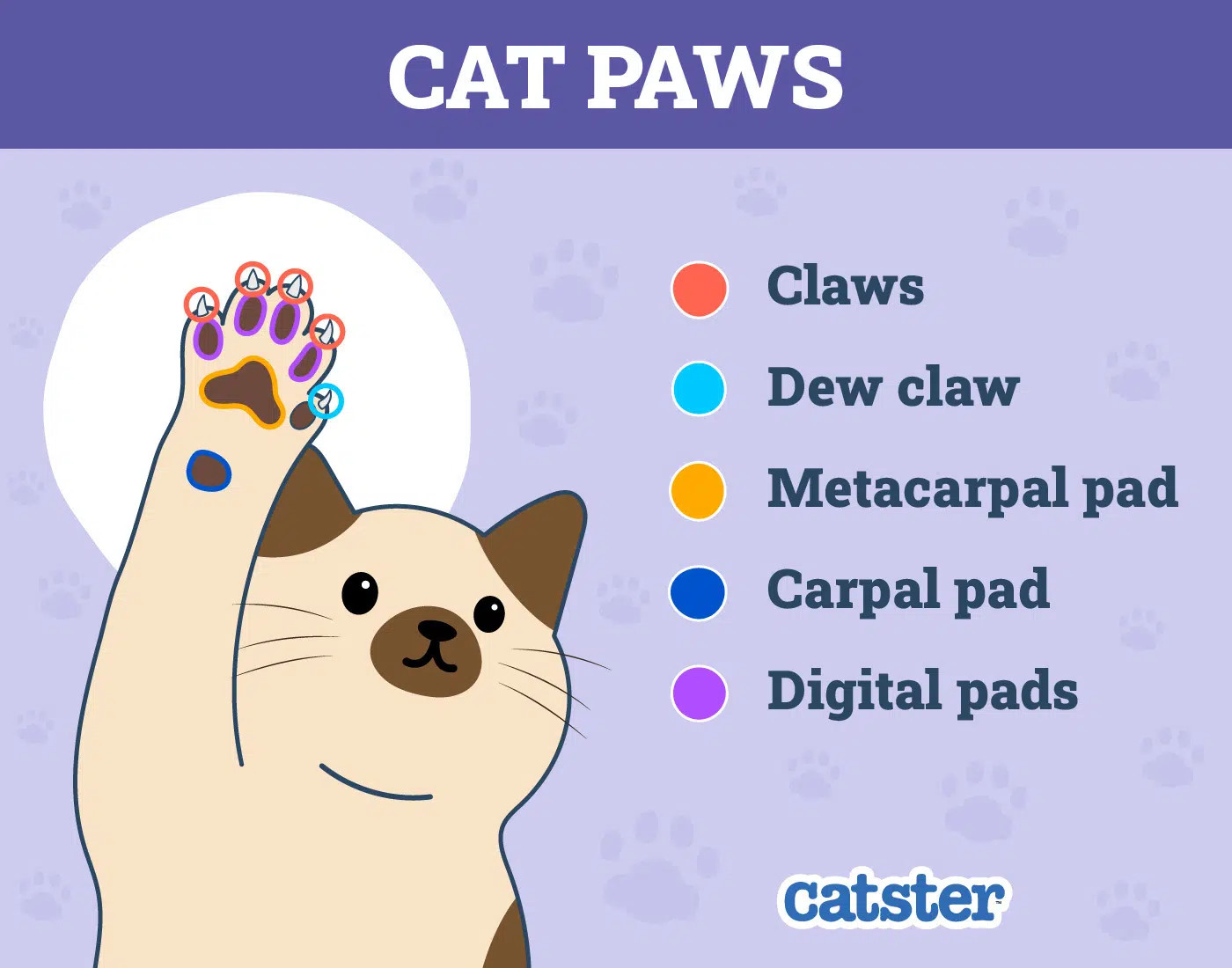 Cat Paw Anatomy
Cat Paw Anatomy
Tactile Senses
In addition to whiskers, cats have touch receptors in their paws and nose, enhancing their tactile perception. Discover how to use touch to bond with your cat and understand their needs on solcat.net.
5. Smell
Smell is a crucial sense for cats. If a cat has a respiratory infection, their inability to smell food can lead to a refusal to eat.
 cat nose
cat nose
Olfactory Prowess
Cats possess a vomeronasal organ, located behind their upper incisors, which helps them detect and process pheromones. These chemical signals are produced in various places, including between their toes and in their anal glands. For more information on how cats use smell to communicate and navigate their world, check out solcat.net.
4. What Are the Key Parts of a Cat’s Brain and Their Functions?
Understanding the main parts of a cat’s brain can provide valuable insight into their behavior and cognitive abilities. The feline central nervous system (CNS) consists of the brain and the spinal cord, each with specific roles.
Major Brain Components
- Cerebellum: Coordinates movement and balance.
- Cerebrum: Controls higher-level functions such as learning, memory, and decision-making.
- Brainstem: Regulates basic life functions like breathing and heart rate.
Detailed Brain Functions
Each part of the brain contributes to a cat’s overall functionality:
- Cerebellum: Ensures smooth, coordinated movements. Damage to this area can result in jerky or uncoordinated movements.
- Cerebrum: Enables cats to process information, learn new behaviors, and make decisions based on their experiences.
- Brainstem: Keeps essential bodily functions running smoothly, often without conscious effort.
For detailed guides on feline health and brain function, visit solcat.net.
5. How Has Domestication Affected the Size of Cat Brains?
Domestication has led to a notable reduction in the brain size of domestic cats compared to their wild ancestors. Research suggests that domestic cats may have experienced a 25% reduction in brain size compared to European and African wildcats.
Brain Size Evolution
The reduction in brain size is likely due to the decreased need for survival skills in a domesticated environment. Wild cats require larger brains to navigate complex environments, hunt, and avoid predators.
Behavioral Changes
With domestication, cats have become less reliant on these skills, leading to changes in brain structure and size. For more information on the effects of domestication on cat behavior, check out solcat.net.
6. How Does a Cat’s Brain Compare to a Dog’s Brain in Terms of Intelligence?
Determining whether cats or dogs are more intelligent is complex, as intelligence can be measured in various ways. While dogs tend to have more neurons overall, cats have a brain structure that is more similar to humans.
Cognitive Abilities
- Dogs: Excel in social cognition and obedience.
- Cats: Demonstrate strong problem-solving skills and adaptability.
The intelligence of each species is tailored to their specific ecological and social needs.
Neurological Differences
Dogs have more neurons in their cerebral cortex devoted to social cognition, whereas cats have more brainpower dedicated to movement and vision. Learn more about the cognitive abilities of cats on solcat.net.
7. How Does the Brain Influence Hunting Behavior in Cats?
The brain plays a pivotal role in the hunting behavior of cats, coordinating sensory information, motor skills, and instinctive responses to make them highly efficient predators.
Instinct and Learning
Hunting behavior in cats is a combination of instinct and learned skills. The brain’s neural pathways are wired to recognize prey and initiate the hunting sequence, which includes stalking, chasing, and capturing.
Sensory Integration
Cats use their acute senses, such as vision, hearing, and smell, to locate and track prey. The brain integrates this sensory information to create a detailed representation of the environment, allowing cats to make precise movements and adjustments during the hunt.
Motor Skills
The cerebellum is essential for coordinating the precise movements required for hunting. It ensures that cats can pounce, leap, and maneuver with agility and accuracy.
To better understand and manage your cat’s hunting instincts, explore the resources available at solcat.net.
8. How Can You Stimulate a Cat’s Brain to Promote Cognitive Health?
Stimulating a cat’s brain is essential for maintaining their cognitive health and preventing cognitive decline as they age. Providing mental enrichment can keep your cat engaged, curious, and happy.
Interactive Play
Engage your cat in interactive play sessions using toys that mimic hunting behavior, such as feather wands, laser pointers, and puzzle toys. These activities challenge your cat’s problem-solving skills and provide mental stimulation.
Environmental Enrichment
Create an environment that encourages exploration and curiosity. Provide climbing structures, scratching posts, and window perches that allow your cat to observe the outside world. Rotate toys regularly to keep them interested.
Training and Learning
Teach your cat new tricks or commands using positive reinforcement techniques. Training sessions provide mental stimulation and strengthen the bond between you and your cat.
Puzzle Feeders
Use puzzle feeders to make mealtime more challenging and engaging. These devices require your cat to solve a puzzle to access their food, providing mental stimulation and preventing boredom.
Visit solcat.net for more ideas and products to stimulate your cat’s brain and promote cognitive health.
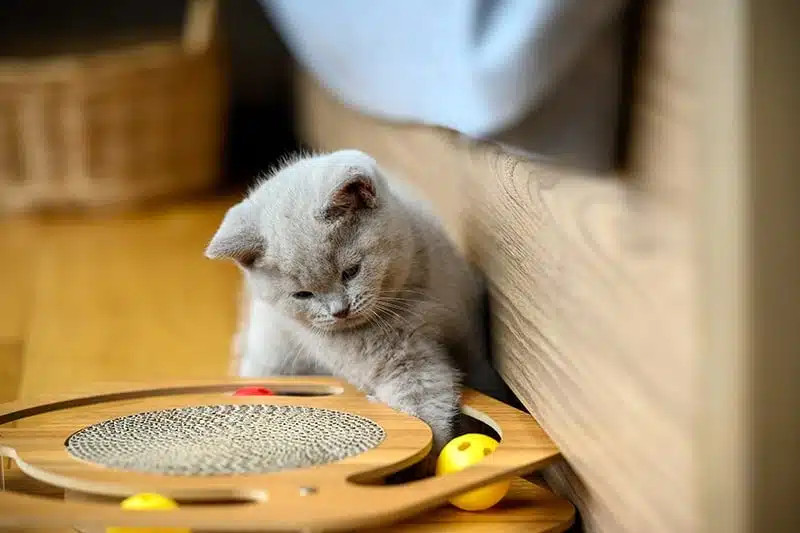 British Shorthair Kitten Playing With Puzzle Toy
British Shorthair Kitten Playing With Puzzle Toy
9. What are Some Common Neurological Disorders That Can Affect Cats?
Several neurological disorders can affect cats, impacting their brain function and overall health. Recognizing the signs and symptoms of these conditions is crucial for early diagnosis and treatment.
Common Neurological Issues
- Cognitive Dysfunction Syndrome (CDS): Similar to Alzheimer’s in humans, CDS causes cognitive decline in older cats, leading to confusion, disorientation, and changes in behavior.
- Epilepsy: Characterized by recurrent seizures, epilepsy can be caused by genetic factors, brain tumors, or other underlying conditions.
- Vestibular Disease: Affects the inner ear and brain, causing balance problems, head tilting, and nystagmus (involuntary eye movements).
- Cerebellar Hypoplasia: A developmental condition where the cerebellum is underdeveloped, resulting in jerky movements and coordination problems.
Symptoms to Watch For
- Changes in behavior or personality
- Seizures or tremors
- Balance problems or difficulty walking
- Head tilting or circling
- Vision or hearing loss
- Lethargy or weakness
If you notice any of these symptoms in your cat, consult with a veterinarian immediately. For more information on feline health and neurological disorders, visit solcat.net.
10. How Can Diet and Nutrition Impact a Cat’s Brain Health?
Diet and nutrition play a crucial role in supporting a cat’s brain health. Providing a balanced and nutrient-rich diet can help maintain cognitive function, prevent neurological problems, and improve overall well-being.
Essential Nutrients
- Omega-3 Fatty Acids: Found in fish oil, omega-3 fatty acids support brain cell function and reduce inflammation.
- Antioxidants: Vitamins E and C, as well as selenium, protect brain cells from damage caused by free radicals.
- B Vitamins: Essential for nerve function and energy metabolism in the brain.
- Protein: Important for building and repairing brain tissue.
Dietary Recommendations
- Feed your cat a high-quality commercial diet that is formulated to meet their nutritional needs.
- Consider supplementing their diet with omega-3 fatty acids or other brain-boosting nutrients, under the guidance of a veterinarian.
- Avoid feeding your cat foods that are high in sugar or processed ingredients, as these can negatively impact brain health.
- Ensure your cat has access to fresh, clean water at all times.
For expert advice on feline nutrition and brain health, visit solcat.net.
In conclusion, the size of a cat’s brain may be small, but its capabilities are vast and impressive. From their exceptional senses to their complex hunting behaviors, a cat’s brain is a marvel of evolution. By understanding how their brains work, we can better appreciate and care for our feline companions. At solcat.net, you’ll find a wealth of information and resources to help you enhance your cat’s life and strengthen your bond. Explore our articles, connect with other cat lovers, and discover the wonders of the feline world.
Address: 950 Alaskan Way, Seattle, WA 98104, United States
Phone: +1 (206) 386-4000
Website: solcat.net
Frequently Asked Questions (FAQ)
1. What Is the Average Weight of a Cat’s Brain?
The average weight of a cat’s brain is about one ounce, which is roughly 1% of their total body weight.
2. How Does a Cat’s Brain Size Compare to a Human’s?
A cat’s brain is much smaller than a human’s brain, but it shares about 90% of the same structural regions.
3. Do Cats Have Good Memories?
Yes, cats have good memories, especially when it comes to remembering routines, locations, and people they interact with regularly.
4. How Do Cats Use Their Sense of Smell?
Cats use their sense of smell to identify food, recognize other cats, and detect pheromones, which influence their behavior and social interactions.
5. Can Cats Recognize Their Owners?
Yes, cats can recognize their owners through a combination of sight, smell, and sound.
6. How Does Domestication Affect a Cat’s Brain?
Domestication has led to a reduction in brain size in domestic cats compared to their wild ancestors due to reduced survival demands.
7. What Is Cognitive Dysfunction Syndrome (CDS) in Cats?
CDS is a cognitive decline in older cats, similar to Alzheimer’s in humans, leading to confusion, disorientation, and behavioral changes.
8. What Role Do Omega-3 Fatty Acids Play in Cat Brain Health?
Omega-3 fatty acids support brain cell function and reduce inflammation, promoting overall brain health in cats.
9. How Can I Stimulate My Cat’s Brain?
You can stimulate your cat’s brain through interactive play, environmental enrichment, training, and puzzle feeders.
10. What Are the Main Parts of a Cat’s Brain?
The main parts of a cat’s brain include the cerebellum (coordinates movement), cerebrum (controls higher functions), and brainstem (regulates basic life functions).

